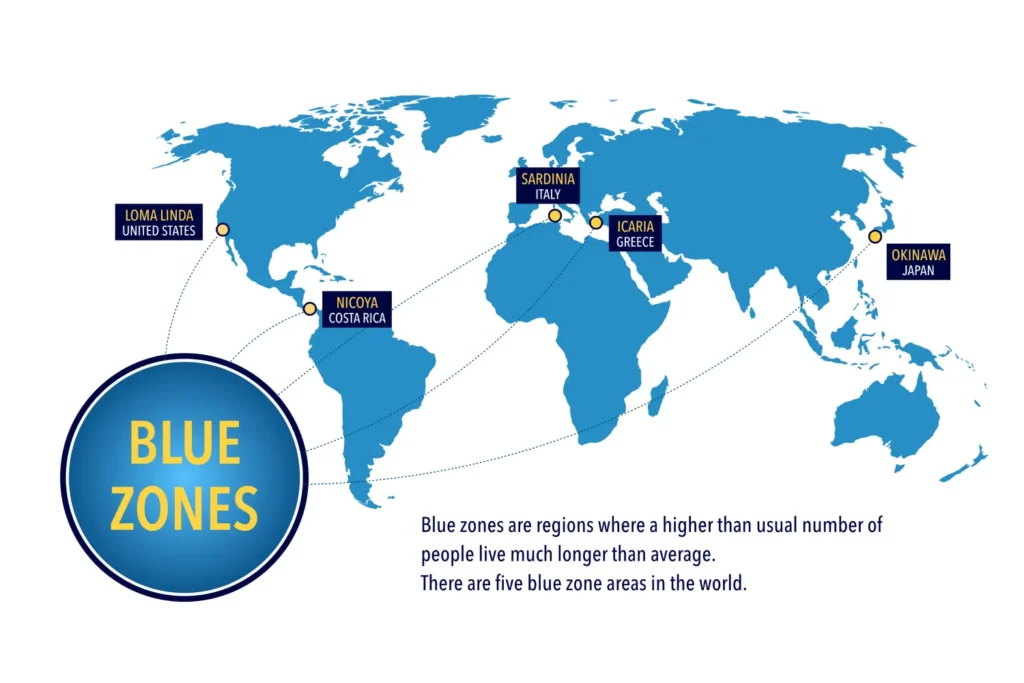Wellness Lifestyle: Powerful Benefits and Hidden Struggles
Living well isn’t about chasing quick fixes or extreme trends. It’s about embracing a wellness lifestyle, which is a balanced way of living that sustains health, happiness, and energy over time. Around the world, people have developed simple yet effective practices that lead to longer lives, lower stress, and deeper joy. By learning these habits and weaving them into our own daily routines, we can build a healthier and more fulfilling future.
This blog explores global best practices, science-backed insights, and practical strategies to help you fully embrace a wellness lifestyle.
Why the Wellness Lifestyle Matters
Health isn’t just the absence of illness—it’s the presence of vitality, clarity, and balance. A wellness lifestyle is important because it:
- Strengthens long-term immunity and resilience
- Improves energy and focus for work and family
- Reduces risks of chronic conditions like diabetes and heart disease
- Enhances emotional well-being by lowering stress and anxiety
- Promotes longevity and a better quality of life
Adopting a wellness lifestyle is more than self-care; it’s an investment in your future.

Lessons from Blue Zones: Longevity Hotspots
The so-called Blue Zones—Okinawa (Japan), Sardinia (Italy), Nicoya (Costa Rica), Ikaria (Greece), and Loma Linda (California)—are regions where people live significantly longer than average. Researchers have identified several key practices that can inspire anyone seeking a true wellness lifestyle.
Key Practices from Blue Zones
- Plant-Forward Diets: Meals are rich in vegetables, legumes, nuts, and whole grains
- Natural Movement: Instead of strict exercise, people stay active with walking, gardening, and household tasks
- Social Bonds: Strong community ties help reduce loneliness and improve mental health
- Purpose-Driven Living: Having a reason to get up each morning is linked to longer life spans
- Stress Reduction: Rituals like naps, tea time, and prayer help maintain calm
These practices are proof that a wellness lifestyle doesn’t require perfection—just consistent, meaningful habits.
Nutrition: Fuel for a Wellness Lifestyle
Food is more than fuel—it’s information for your body. What you eat shapes how you feel, perform, and recover.
Global Nutrition Practices
- Mediterranean Diet (Italy & Greece): Fresh produce, olive oil, fish, and nuts, all proven to boost heart health
- Okinawan Diet (Japan): Sweet potatoes, tofu, and green tea linked to longevity
- Ayurvedic Nutrition (India): Spices, herbs, and mindful eating to balance body energy (doshas)
Everyday Nutrition Habits
- Fill half your plate with vegetables
- Choose whole foods over processed products
- Stay hydrated—water before coffee is best
- Eat mindfully: chew slowly, avoid screens
Nutrition lies at the heart of a wellness lifestyle because it directly fuels your body and mind.
More from Blogs: Healthy Lifestyle: Living Better Every Day
Movement: More Than Exercise
A wellness lifestyle doesn’t demand endless hours at the gym. The secret lies in consistent, enjoyable movement.
Global Inspiration
- Nordic Walking (Finland): Boosts cardiovascular health and posture
- Tai Chi (China): Gentle, meditative movements that reduce stress and enhance balance
- Yoga (India): Builds strength, flexibility, and inner focus
Practical Tips
- Aim for 7,000–10,000 steps daily
- Mix strength training with stretching
- Pick active hobbies like dancing or gardening
- Take movement breaks during long work sessions
Movement should be something you look forward to—not a chore. That’s the essence of a real wellness lifestyle.
Sleep: The Forgotten Pillar of Wellness
Many cultures place as much value on sleep as on food and exercise. Unfortunately, modern lifestyles often disrupt it.
Sleep Practices Around the World
- Siestas (Spain): Afternoon naps recharge the body and mind
- Inemuri (Japan): Quick naps in public prevent burnout
- Nordic Rituals: Evening sauna sessions enhance deep rest
Sleep Hygiene Tips
- Stick to a regular bedtime and wake-up routine
- Keep the bedroom dark, cool, and quiet
- Avoid caffeine late in the day
- Unplug from screens at least 30 minutes before sleep
Good sleep isn’t optional—it’s the foundation of a sustainable wellness lifestyle.
Mindfulness and Mental Wellness
A true wellness lifestyle balances the body and mind. Stress and constant distractions take a toll, but timeless traditions show us a better way.
Global Inspirations
- Ikigai (Japan): Living with purpose for daily motivation
- Meditation (India & Tibet): Proven to reduce anxiety and sharpen focus
- Gratitude Journals (U.S.): Writing down positives fosters optimism
Everyday Mindfulness Practices
- Start mornings with deep breathing
- Try short meditation sessions with apps
- Schedule “digital detox” hours
- Walk in nature to restore calm
Mental balance completes the circle of a wellness lifestyle.
Community and Relationships
Humans are wired for connection, and a wellness lifestyle thrives on strong relationships.
Best Practices from the World
- Sardinian Family Dinners: Daily meals strengthen family bonds
- Ubuntu (South Africa): “I am because we are”—the power of community
- Friendship Circles (Loma Linda): Support networks linked to longevity
How to Apply It
- Host weekly family or friend dinners
- Join community clubs, fitness groups, or volunteering events
- Practice active listening with loved ones
Relationships are the backbone of wellness—without them, other habits fall short.
Work-Life Balance: A Modern Necessity
A wellness lifestyle must adapt to modern challenges like demanding jobs and burnout. Some countries offer great models:
- Sweden’s Fika: Coffee breaks as a cultural norm for slowing down
- France’s 35-Hour Work Week: Setting clear work-life boundaries
- Denmark’s Hygge: Creating cozy, content living to recharge
Practical Takeaways
- Protect downtime with the same priority as meetings
- Learn to say no when overextended
- Take guilt-free vacations and rest
Balance isn’t indulgence—it’s survival in today’s world.
Technology and the Wellness Lifestyle
Technology is both a tool and a challenge. Used wisely, it can amplify a wellness lifestyle.
Helpful Uses
- Fitness apps to track workouts and sleep
- Meditation apps for daily mindfulness
- Wearables that monitor heart health and stress
Caution Points
- Overuse can lead to screen fatigue and poor sleep
- Constant notifications break focus and fuel anxiety
Use technology as a support system, not a master. That’s how it fits into a true wellness lifestyle.
Putting It All Together: A Wellness Lifestyle Blueprint
Here’s a simple framework to start living the wellness lifestyle today:
- Eat mostly whole, plant-based foods
- Move daily in ways you enjoy
- Sleep 7–8 hours consistently
- Practice mindfulness to manage stress
- Build and maintain strong social ties
- Balance work and rest
- Use technology with intention
Start small, stay consistent, and these steps will add up to a transformation.
Adopting a wellness lifestyle isn’t about perfection—it’s about steady progress. From Sardinian family dinners to Japanese mindfulness practices, the world offers wisdom we can learn from.
When you combine these timeless habits with modern knowledge, you create a lifestyle that supports not only health but also joy and purpose. Start today, keep it simple, and watch your life gradually transform.
Frequently Asked Questions
1. What is a wellness lifestyle?
It’s a balanced way of living that includes healthy eating, movement, good sleep, mindfulness, and strong relationships.
2. Why is the wellness lifestyle important?
It boosts immunity, reduces disease risk, improves energy, and enhances both mental and physical well-being.
3. What are global best practices for a wellness lifestyle?
Examples include the Mediterranean diet, Japanese Ikigai, yoga from India, and siestas in Spain.
4. How do I start living a wellness lifestyle?
Begin with small steps—add more vegetables, walk daily, or set a regular sleep schedule.
5. Can technology support wellness?
Yes, fitness trackers and meditation apps are helpful—but moderation is key.
6. Do I have to give up modern comforts?
Not at all. A wellness lifestyle is about balance, not deprivation.
